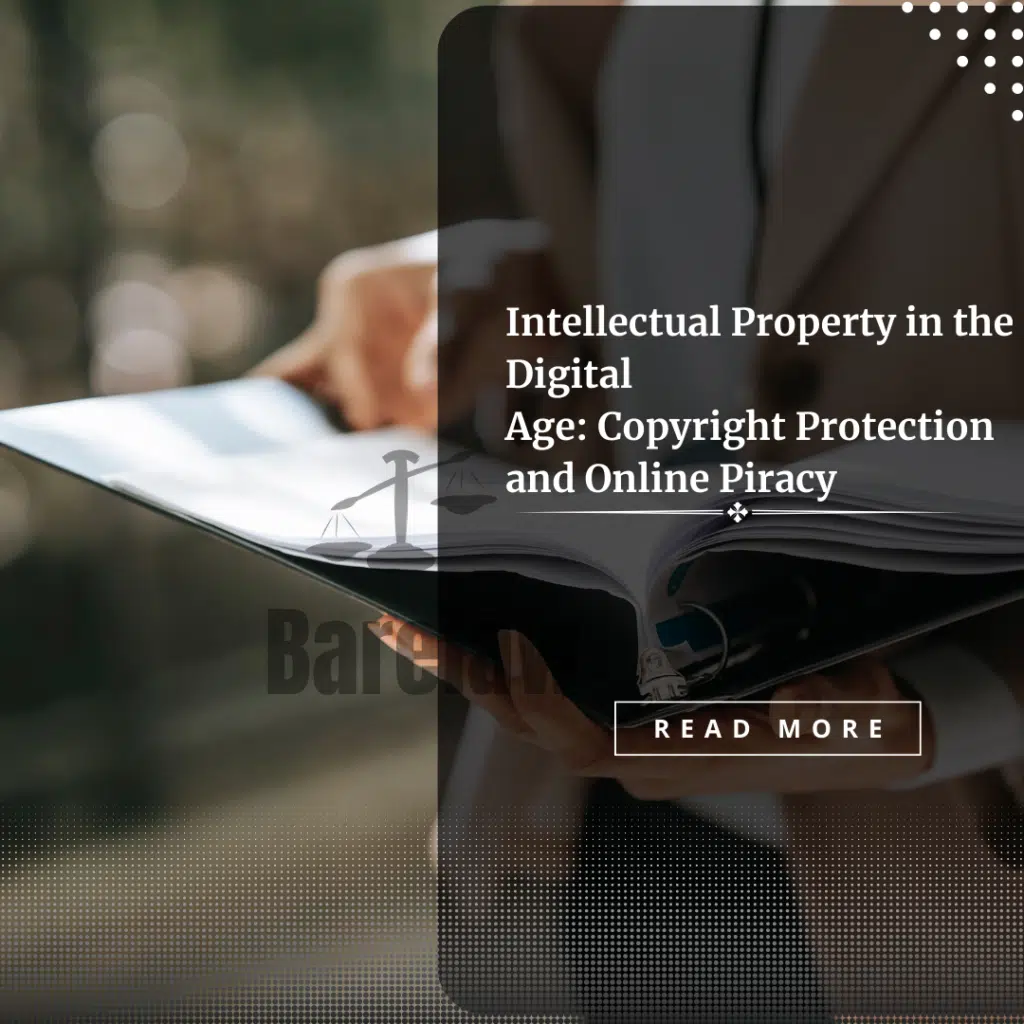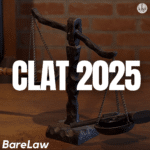
Table of Contents
Intellectual Property in the Digital Age: Copyright Protection and Online Piracy
Intellectual Property in the DigitalAge: Copyright Protection and Online Piracy
Introduction-
n our digital age, intellectual property (IP) is increasingly at risk of being infringed upon and pirated. Copyright, one type of IP, is essential for protecting creative works and encouraging innovation. However, copyright laws are harder to enforce with the internet and digital technologies that have opened new doors to piracy. This article will discuss what intellectual property rights are all about, copyright principles as well as their value in the digital world.
Legal frameworks used against copyrights infringement during this technological era will also be explored alongside strategies employed towards promoting fair use management systems within sustainable environments where every player benefits equally while ensuring justice prevails at all times. Intellectual Properties Protection has become an important aspect especially since most people can now easily pirate anything they want from the web hence making it hard for artists or creators who produce original content get any credit or make money out of it.
I. Understanding Intellectual Property-
A. Understanding Intellectual Property Rights
Definition And Importance Of Intellectual Property: Inventions; literary or artistic works such as novels films paintings etcetera; symbols used by organizations like logos badges names emblems etcetera; designs which could be architectural drawings industrial prototypes fashion pieces furniture upholstery patterns etcetera are all creations of the mind recognized under intellectual property rights(IPRs). Creators get exclusive privileges over these intangible assets thereby motivating them to invest more time effort materials into coming up with innovative ideas and other forms of creative work.IPRs give protection against unauthorized copying Imitation distribution modification performance display translations adaptation rental lending public broadcasting communication through wire wireless means etcetera therefore ensuring that authors reap economic rewards from their endeavors while retaining control over what they have created.
B. Copyright Protection
Copyright is a form of legal safeguard provided for original literary dramatic musical artistic any other intellectual creation expressed in words pictures sounds or symbols.It gives creators sole rights over reproduction adaptation distribution performance public display broadcasting etcetera so as t
II. Copyright Protection in the Digital Age-
A. Challenges of the Digital Environment
The Rise Of The Internet: There has been a tremendous change in how we access share distribute information since the invention of internet coupled with digital technology advancements.International Federation Of Library Associations And Institutions(IFLA) stated that “Digital platforms offer unprecedented opportunities for creativity and reaching out globally but also pose new challenges to copyright protection”.
- Ease Of Reproduction: Copying works becomes very easy when they are produced digitally unlike when it was done manually.This makes it hard control unauthorized duplication and distribution of content.
- International Scope: With online content being accessible from any part world there is need harmonize enforcement measures across borders so as to have consistent application copyright laws worldwide.
- Peer To Peer(P2P) File Sharing Networks: These networks allow users share files directly among themselves thus bypassing traditional distribution channels controlled by Copyright holders.
B. Digital Rights Management (DRM)
Digital rights management(DRM) refers technologies systems employed protect against unauthorized use or sharing It may include encryption watermarking access controls etcetera.DRM prevents copying modifying usage tracking patterns among others rights associated with particular works.
C. Safe Harbors And Liability Limitation
Safe harbors are provisions under law which limit liability for certain acts provided that prescribed conditions are followed.A good example is Digital Millennium Copyright Act (DMCA) enacted in United States this gives protection to service providers who act upon notices given by owners whose material has been used without permission.The European Union’s Directive on Copyright Single Market provides another safe harbor where internet intermediaries will not be held liable if they remove infringing content once notified about it.
III. Online Piracy and Copyright Infringement-
A. Types of Online Piracy:
- Digital Piracy: Unauthorized reproduction or distribution of copyrighted digital content such as movies, music, software and e-books; this includes file sharing, torrenting, and unauthorized streaming.
- Counterfeit Goods: Websites and online marketplaces enable the sale of fake physical goods like clothing, electronics or luxury items which infringes on trademarks and copyright laws.
- Plagiarism: Plagiarism is using someone else’s work without permission or giving credit; it affects different types of content including articles, academic papers and creative works.
B. Impacts of Online Piracy: Online piracy has far-reaching consequences for creators, copyright holders, and the broader economy.
- Economic Losses: Industries lose a lot of money when their products are pirated because they do not make sales hence no profits earned leading to significant economic declines; for example music industry, film industry etc.
- Creative Stifling: When creators see that their work can be easily stolen through piracy most times they may lack motivation for investing in new creations fearing that they might also go unappreciated.
- Quality and Safety Concerns: The quality control standards implemented in pirated contents are very low thereby exposing the users to dangers associated with malwares contained in these files as well as counterfeit products which could be hazardous especially electronic gadgets such as batteries among others.
C. Legal Responses to Online Piracy: Governments and copyright holders employ various legal strategies to combat online piracy and protect copyright holders’ rights.
- Notice & Takedown – The notice & takedown system allows copyright holders to request removal of infringing material from online platforms by sending a notification asking them to take down the content; if they fail do so within certain period then legal actions may be taken against them basing on DMCA regulations.
- Site Blocking – In some jurisdictions courts have ordered internet service providers (ISPs) block access to websites hosting copyrighted materials illegally obtained through piracy activities; this aims at limiting chances people getting involved into downloading illegal copies hence reducing rate at which intellectual properties rights are violated worldwide via web networks like P2P sharing systems such as bit torrent etcetera used widely across globe mainly for distribution purposes.
- International Cooperation – Various governments and international organizations work together in fighting against cross-border copyright thefts committed on the internet; agreements are made and initiatives developed towards promoting sharing information as well enforcement cooperation among different nations with aim harmonizing copyright laws worldwide so that they can be universally applicable wherever such offences occur.
IV. Balancing Copyright Protection and Digital Access-
A. Fair Use and User Rights: In the copyright laws of many countries are fair use provisions which permit limited use of copyrighted work without obtaining permission from the copyright owner. Fair uses exceptions foster creativity, education, and freedom of expression while balancing between copyright protection and user’s rights.
B. Open Access and Creative Commons Licensing: Copyright provides alternative ways for creators to protect their works through open access initiatives and creative commons licensing frameworks which enable them share these works with more liberal usage rights. Such models foster collaboration, knowledge sharing as well as innovation while still respecting the rights of copyright holders.
C. Education And Awareness: It is important to sensitize people about copyright law, intellectual property rights and piracy effects too. Educational campaigns or programs can help individuals appreciate why they need to safeguard copyrights thus discouraging them from participating in online piracy activities.
Copyright Protection-
Copyright protection is a legal system that grants authors exclusive rights over their works so as to control its use by others. This comprises right of reproduction, adaptation (translation), distribution including rental or lending copies thereof where such rentals or loans involve transmitting work through wire or wireless means; public performance whether for profit or not unless it is a non-commercial broadcasting organization making communication to public not present during act; broadcasting whether by wireless means or not including simultaneous cable re-transmission single programme already broadcasted simultaneously cablecast single programme directly taken off-air satellite signal intended solely reception within same geographical area covered by original terrestrial transmission provided no alteration made apart from necessary editing comply with technical requirements prepare said broadcast channel; communication including making available public telecommunications networks such wired internet except when person acting lawfully engaging transmission computer program whose main purpose enable acts infringement right;
The principal statute governing copyright in India is the Copyright Act 1957 enacted by Parliament under Art 253(1) of Constitution read with Entry 13 List I Seventh Schedule thereto. The Act protects two sets of rights: economic and moral. Economic rights grant creators exclusive right to authorize reproduction, adaptation, publication, performance or broadcast among others while moral rights protect author’s reputation against derogatory treatment.
Online Piracy-
Online piracy is the illegal copying and distribution of software, music, movies or other digital content protected by copyright. It poses a serious threat to the rights of authors as well as inhibits innovation and creativity. The word “piracy” refers to unauthorized copying or sharing copyrighted material without permission from its owner(s). This can take various forms such as:
- Unauthorized reproduction of physical products
- Reproduction in intangible ways (Internet, etc.)
- Physical distribution and sale
- Transmission
Piracy is a complex issue that requires comprehensive approach for it to be effectively dealt with. One way is enacting special legislations targeting internet piracy activities; section 66 of IT Act 2000 prohibits illegal distribution copyrighted materials through internet within India jurisdiction. Another method involves utilization of John Doe orders which allow copyright holders obtain court order against unknown defendant(s) where there are reasonable grounds believe infringement has occurred but proper identification not possible due limited knowledge about accused person’s whereabouts or identity.
Conclusion-
Protecting intellectual property in the digital era and fighting against online piracy present an intricate task that keeps changing over time. Copyright protection still remains important for fostering creativity, incentivizing innovation as well as supporting fair sustainable creative industry growth. Strategies including digital rights management systems (DRMs), legal frameworks and international cooperation can be used to prevent internet piracy while enforcing copyright laws at global level.
Alongside balancing between users’ rights with copyright protection exploring alternative licensing models also contributes towards achieving more equitable digital environment. Ultimately, governments need to work closely together with copyright owners plus technology firms alongside individuals themselves showing respect for intellectual property since this will boost invention nurture talent thus ensuring steady development of information society economy at large



